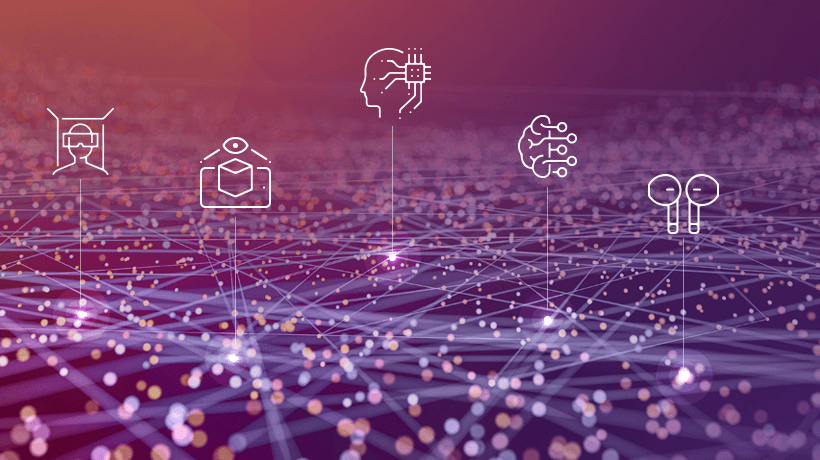The eLearning Revolution: Five Emerging Trends Shaping 2025
The eLearning industry is undergoing a dynamic transformation as we move through 2025. Driven by rapid advances in technology and shifting learner expectations, online education is now more engaging, accessible, and outcome-focused than ever before. From Artificial Intelligence (AI) to immersive technologies, modern eLearning platforms are redefining how knowledge is delivered and consumed across disciplines, from web development with the MERN stack to financial risk management. Let's explore the five most impactful emerging trends shaping this exciting landscape and see how they are being implemented in real-world learning environments.
1. AI-Powered Personalized Learning Paths
Artificial Intelligence is no longer just a buzzword in the eLearning space; it has become the backbone of modern educational platforms. AI-driven systems are now capable of analyzing each learner's progress, preferences, and performance to deliver a truly personalized learning experience. These platforms can recommend the next best course (for example, suggesting data structures and algorithms with Python after a student completes basic Python modules), adjust the difficulty level of exercises in real time (especially useful in competitive programming), and even provide virtual tutoring for complex topics like Machine Learning.
- Implementation example
Many data science programs have adopted AI to analyze student code submissions. The system provides instant, tailored feedback—highlighting errors, suggesting improvements, and even offering hints for common pitfalls. This not only accelerates the learning curve but also helps students correct mistakes much faster than traditional grading methods. The result is a more adaptive and motivating educational journey, where every learner can move at their own pace and focus on areas that need the most attention.
2. Micro-Credentials And Skill-Specific Learning
As the job market becomes increasingly dynamic, the demand for focused, career-relevant skills is higher than ever. This has led to the rise of micro-credentials—short, skill-specific certifications that can be earned quickly and stacked to create a customized skillset. Learners now pursue nano-degrees in high-demand fields such as DevOps, Web3, and cloud computing, or combine modular courses like SQL and Power BI to tailor their expertise for specific roles.
- Real-world impact
Consider a marketing professional who needs to master Google Analytics for their job. Instead of enrolling in a semester-long program, they can now complete a 20-hour micro-course and immediately apply those skills at work. This modular, stackable approach empowers learners to adapt quickly to new technologies and changing job requirements, making them more competitive in the workforce. Industry-recognized certifications in areas like ethical hacking and cloud computing are also becoming essential for IT professionals seeking to validate their expertise.
3. Immersive Technologies In Practical Training
Immersive technologies—such as Virtual Reality (VR), Augmented Reality (AR), and interactive 3D environments—are revolutionizing hands-on learning. These tools provide engaging, risk-free environments for learners to practice real-world skills and scenarios that would be difficult, expensive, or dangerous to replicate in traditional classrooms.
- Virtual labs
These are now common in app development and React Native training, allowing students to build and test applications in simulated environments. - AR simulations
These help UI/UX designers prototype and test interfaces, offering instant feedback and the ability to iterate quickly. - 3D environments
These are used for financial modeling, enabling learners to visualize complex data and scenarios in a more intuitive way.
- Case study
Some C++ courses have integrated browser-based coding sandboxes with real-time compiler feedback. This eliminates the need for complex software setup, allowing beginners to focus on learning core programming concepts and experiment freely, which boosts both confidence and skill retention.
4. Community-Driven Learning Ecosystems
Learning is no longer a solitary endeavor. Modern eLearning platforms are building vibrant, collaborative communities that extend education beyond the digital classroom. Features like peer code reviews in web development, live trading sessions for stock market courses, and design critique groups are now standard.
- Notable development
Many data analytics programs have integrated Slack or Discord communities where students collaborate on real-world datasets, share resources, and solve problems together—mirroring the teamwork found in professional analytics environments. These ecosystems foster knowledge sharing, networking, and peer support, making learning more social, interactive, and enjoyable.
5. Hybrid Skill Stacks For Future-Proof Careers
The most successful learners in 2025 are those who combine technical skills with soft skills and interdisciplinary knowledge. Employers increasingly seek professionals who can bridge gaps between domains, communicate effectively, and adapt to new challenges. Popular hybrid combinations include:
- React JS expertise paired with communication and teamwork skills.
- Tableau data visualization combined with storytelling techniques.
- AI tools proficiency merged with ethical application awareness.
- Emerging career stacks
Java + financial risk management for FinTech developers, and Machine Learning + technical analysis for quantitative traders are two examples of hybrid stacks that are in high demand.
Conclusion: The Future Is Adaptive And Integrated
The emerging trends shaping eLearning in 2025 demonstrate that effective online education must be:
- Personalized through AI-powered learning paths.
- Modular and stackable with micro-credentials.
- Experiential via immersive technologies.
- Community-oriented for collaborative growth.
- Interdisciplinary to build future-proof careers.
For learners, this means unprecedented opportunities to build customized, relevant skill portfolios. As technology and pedagogy continue to evolve, the most successful eLearning platforms will integrate these emerging trends, delivering flexible, engaging, and outcome-driven education for all.









